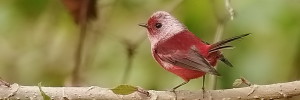Go to All Blogs | Neotropical Blogs | Guatemala Birding Tours | All our Birding Tours
Climate: The weather in Guatemala can change from hot and humid on the Pacific coast to cool and damp in the cloud forest. The best time to visit is from December to March, when the dry season means little rain. The rains begin at the end of April or early in May, the weather becomes hot and muggy, and this is when the bugs come out. March in the lowlands can be quite hot, so be prepared with extra water if you visit the area during this time.
Getting to Guatemala is quite easy. There are several short flights from the southern US that take only about three hours. Most international flights will connect from Miami, Atlanta, or Houston, depending on the carrier. From up north it takes about seven hours. When you arrive, don’t be surprised by cooler temperatures if you come during the dry season. Guatemala City is at an altitude of around 5,000 feet, so the weather is lovely during the day and cooler at night.
There are many hotels from five star luxury to basic accommodation in Guatemala City, but many people make the one-hour drive to Antigua to stay in this culturally and historically important and scenic town, which was once the capital, before several earthquakes devastated the city. The last one in 1773 leveled much of the city. The Spanish crown then moved to what is today Guatemala City, and Antigua got its currently still official name at that time, Antigua Guatemala, “the old Guatemala city”, but today it is known mostly just as Antigua. Many of the hotels in Antigua harken back to the colonial days and provide nice accommodation from $150 to $60 per night. Antigua is fairly laid back, and there are some nice restaurants, all serving the local coffee as well as traditional foods to more international cuisine in a comfortable atmosphere. Prices vary from local dishes at $5 to more exotic fare at $35, depending on what you want to order.
Birding Field guides: There is an old field guide by Hugh Land that covers Guatemala, but it is a bit outdated, having been published back in 1970. It has some relevant information, but the names are a bit off with today’s taxonomy and nomenclature. The plates are valid, but not the best artwork. There is a guide to the birds of Tikal, but that is even older, from 1966. However, you can still buy copies at the ruins themselves or in the airport in Flores, where most people arrive. Randall Beavers did a checklist of Tikal in 1992, which has some good information in it but could stand to be updated. There is a guide that covers the birds of the region, The Birds of Mexico and Northern Central America, by Howell and Webb, which has range maps, good info, and nice plates.
The plates are in the center; many people take these out, laminate them, and keep the rest of the guide back in the room, so you can have just the plates in the field. This does save weight, but as the plates cover mainly Mexico, there is a lot of overlap of similar species, and this is where range maps and descriptions can be helpful. This book was published in 1995 and is starting to show some age. There is yet another similar guide by Earnest Preston Edwards, called The Birds of Mexico and Adjacent Areas. This was published in 1998 and has much less information, but it is more portable. The plates are in the middle and are not as good as in Howell and Webb, and there are no range maps. But this volume is easier to travel with. I took all of these for reference, which worked fine at night, to go back and look through the guides to make comparisons. Hopefully, with more people visiting this region for birding a new book will soon come out that will be in a more modern format with updated taxonomy.
Bird Checklists: Many of the sites you can bird have their own checklists, which you can get at the site, but Birdwatching Guatemala attaches many of them to individual pages. This website is a great resource for birding in Guatemala.
For a country checklist visit this site.
Safety and security: We travelled in a group and had no problems along the way. As anywhere, traveling alone can be dangerous, so take precautions when carrying a large amount of birding gear, binoculars, cameras, etc. I try not to flash all my gear around even when I’m at home by myself, so don’t do it when you’re on vacation either. Traveling in an organized group is always preferred, as it is known what accommodations, travel times, destinations, etc., are planned out beforehand, so people know where and when you should be somewhere.

